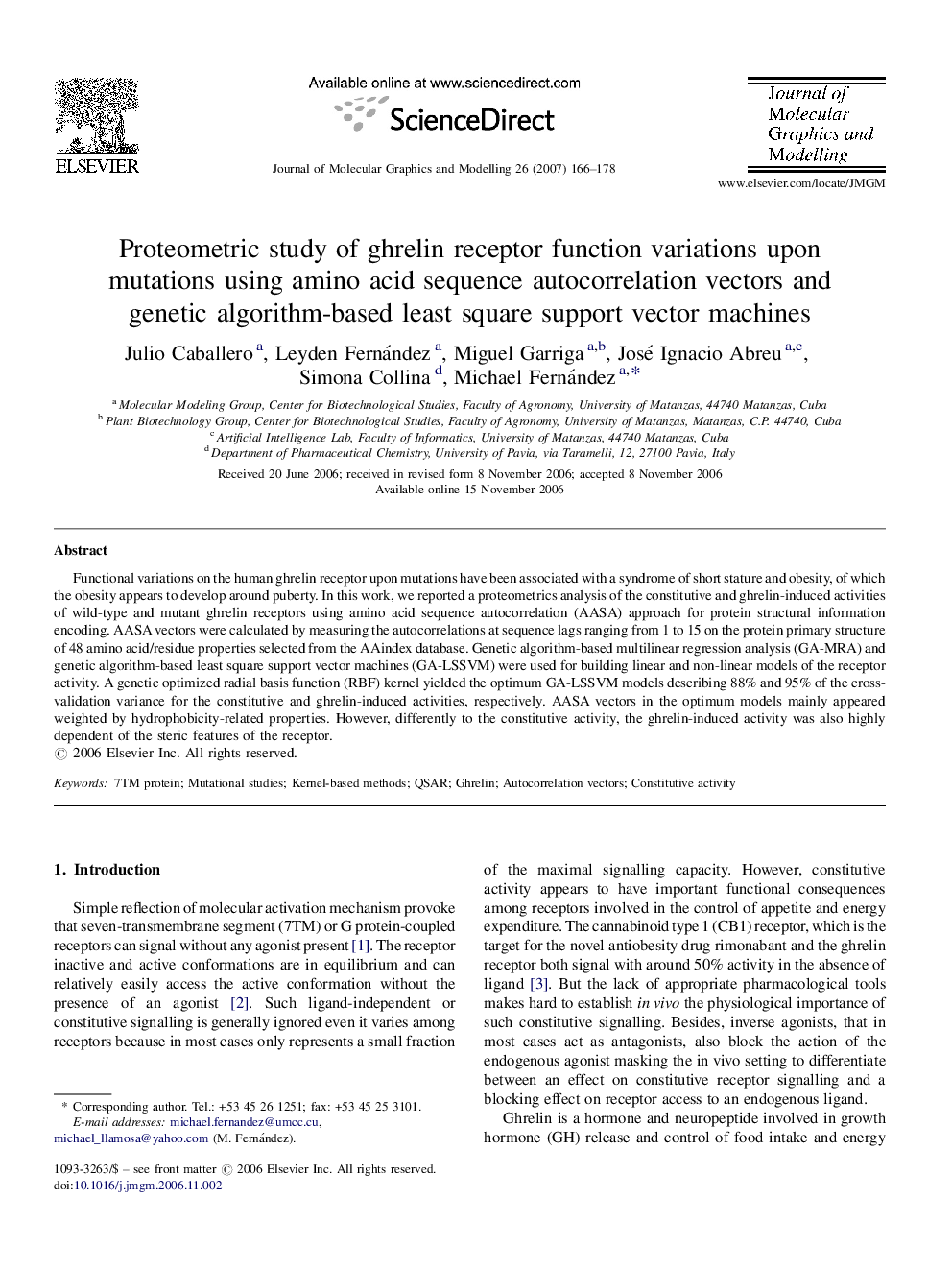| Article ID | Journal | Published Year | Pages | File Type |
|---|---|---|---|---|
| 442991 | Journal of Molecular Graphics and Modelling | 2007 | 13 Pages |
Functional variations on the human ghrelin receptor upon mutations have been associated with a syndrome of short stature and obesity, of which the obesity appears to develop around puberty. In this work, we reported a proteometrics analysis of the constitutive and ghrelin-induced activities of wild-type and mutant ghrelin receptors using amino acid sequence autocorrelation (AASA) approach for protein structural information encoding. AASA vectors were calculated by measuring the autocorrelations at sequence lags ranging from 1 to 15 on the protein primary structure of 48 amino acid/residue properties selected from the AAindex database. Genetic algorithm-based multilinear regression analysis (GA-MRA) and genetic algorithm-based least square support vector machines (GA-LSSVM) were used for building linear and non-linear models of the receptor activity. A genetic optimized radial basis function (RBF) kernel yielded the optimum GA-LSSVM models describing 88% and 95% of the cross-validation variance for the constitutive and ghrelin-induced activities, respectively. AASA vectors in the optimum models mainly appeared weighted by hydrophobicity-related properties. However, differently to the constitutive activity, the ghrelin-induced activity was also highly dependent of the steric features of the receptor.
